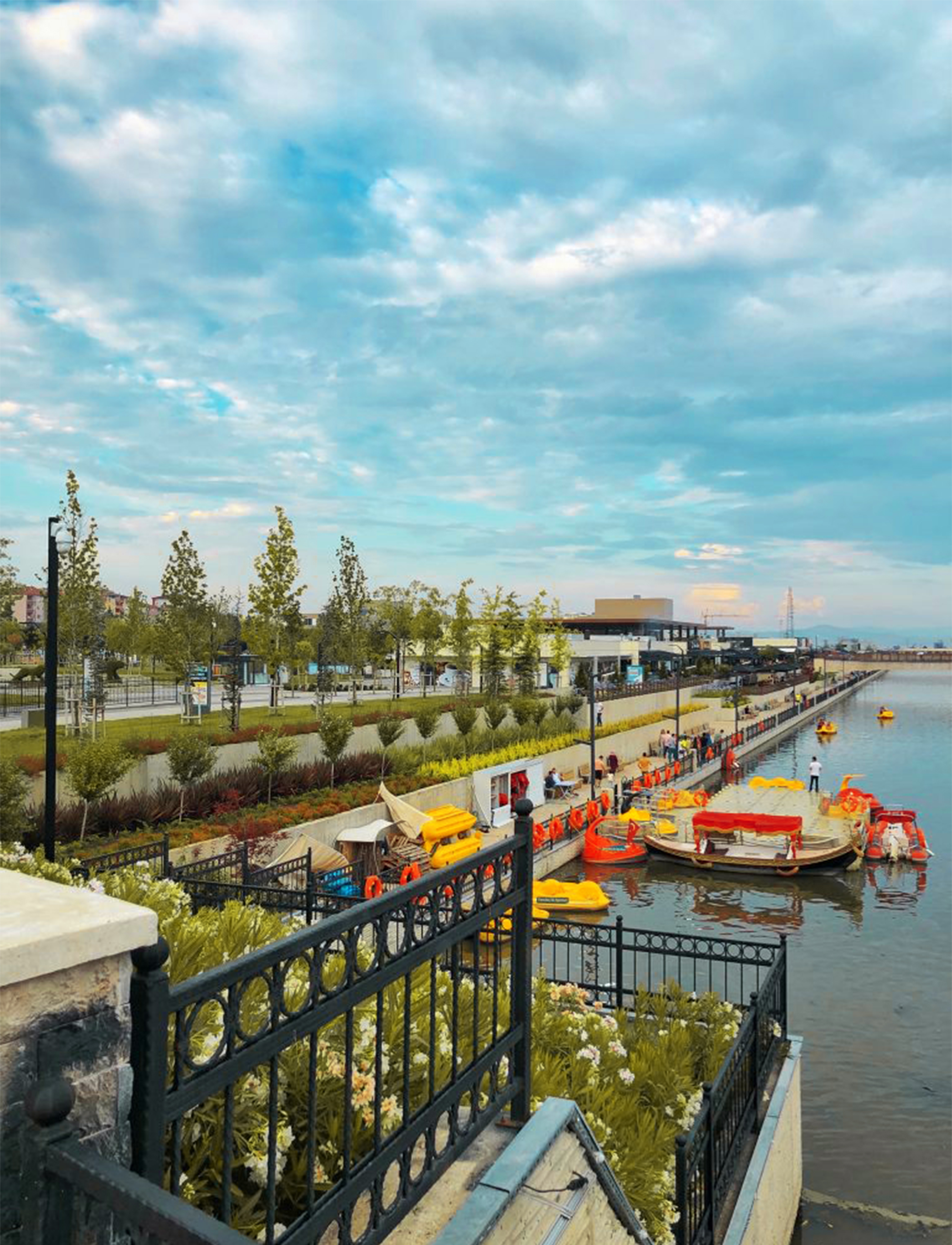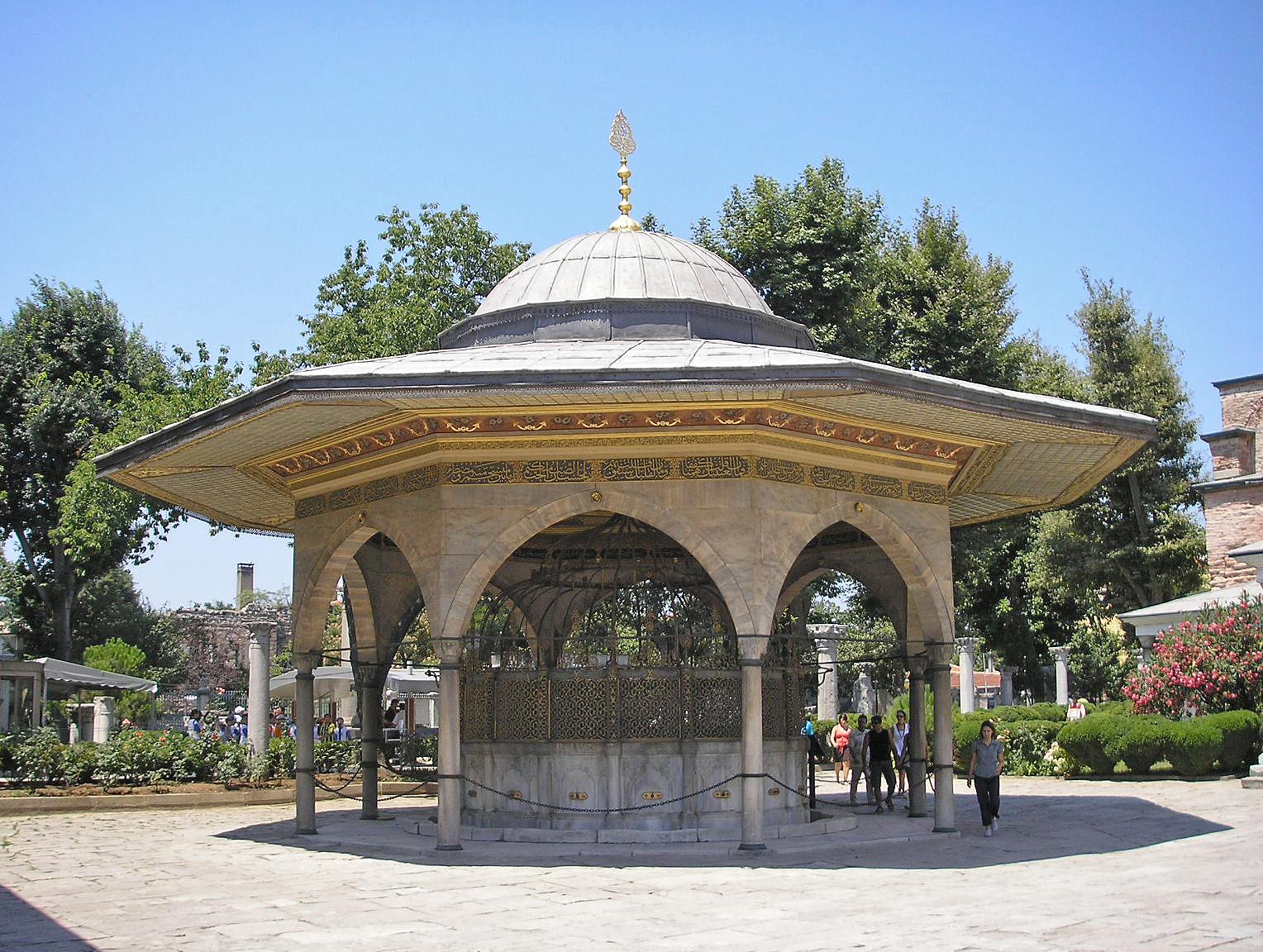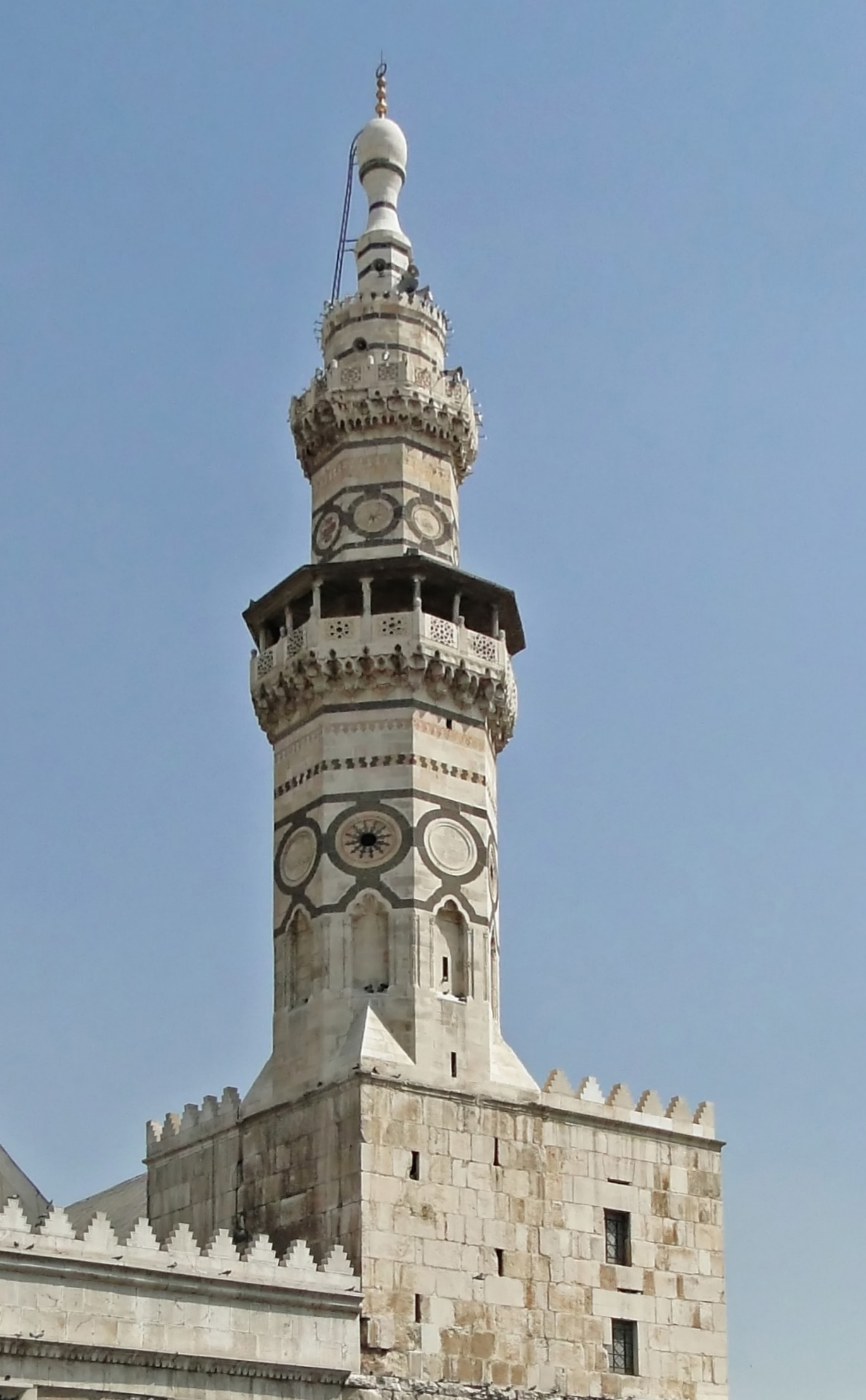|
Zagan Pasha Mosque
Zagan Pasha Mosque ( tr, Zağnospaşa Camii) is a historic mosque in Balıkesir, northwest Turkey. It is known as the place, where Mustafa Kemal Atatürk delivered his famous "Balıkesir Khutbah" in 1923. The mosque was built in 1461 by Zagan Pasha (fl. 1446–1462 or 1469), an Ottoman military commander and Grand Vizier of Albanian origin; he was the son of the right hand of Geroge Castriot Skanderbeg - Vrana Konti. Located in the city center, at Mustafa Fakıh neighborhood, it is part of a complex consisting of a tomb and a hammam. The mosque and the tomb, broke down in 1897, were rebuilt in 1908 by the Mutasarrıf (Governor) Ömer Ali Bey. It is the biggest mosque in Balıkesir. The square-plan mosque is constructed in ashlar masonry. It has one main dome surrounded by four side domes, which are separated by vaults. Entrance to the mosque is through double-winged wooden doors in the north, west and east. On three sides of the mosque, in front of the doors, there is a ... [...More Info...] [...Related Items...] OR: [Wikipedia] [Google] [Baidu] |
Balıkesir
Balıkesir () is a city in Turkey and is the capital city of Balıkesir Province. Balıkesir is located in the Marmara region of Turkey and has a population of 338,936. Between 1341–1922, it was the capital of Karasi. History Close to modern Balıkesir was the Roman town of '' Hadrianutherae'', founded, as its name commemorates, by the emperor Hadrian. Hadrian came to the region in A.D. 124, as a result of a successful bear hunting he had established a city called his name here. It is estimated that the city consisted of the castle, the homestead, the stud and a few homes. It is thought that the small town was where the current stadium is present. Members of the Roman and Pre-Byzantine dynasty had used this castle as a vacation area and for hunting. During the Byzantine period, the small town which had become increasingly neglected was known as ''Palaeokastron'' ( el, Παλαιόκαστρο) meaning Old Castle. Also, when the Turkomans came from Middle Asia to Mys ... [...More Info...] [...Related Items...] OR: [Wikipedia] [Google] [Baidu] |
Turkish Bath
A hammam ( ar, حمّام, translit=ḥammām, tr, hamam) or Turkish bath is a type of steam bath or a place of public bathing associated with the Islamic world. It is a prominent feature in the culture of the Muslim world and was inherited from the model of the Roman '' thermae.'' Muslim bathhouses or hammams were historically found across the Middle East, North Africa, al-Andalus (Islamic Spain and Portugal), Central Asia, the Indian subcontinent, and in Southeastern Europe under Ottoman rule. A variation on the Muslim bathhouse, the Victorian Turkish bath, became popular as a form of therapy, a method of cleansing, and a place for relaxation during the Victorian era, rapidly spreading through the British Empire, the United States of America, and Western Europe. In Islamic cultures the significance of the hammam was both religious and civic: it provided for the needs of ritual ablutions but also provided for general hygiene in an era before private plumbing and s ... [...More Info...] [...Related Items...] OR: [Wikipedia] [Google] [Baidu] |
Buildings And Structures In Balıkesir Province
A building, or edifice, is an enclosed structure with a roof and walls standing more or less permanently in one place, such as a house or factory (although there's also portable buildings). Buildings come in a variety of sizes, shapes, and functions, and have been adapted throughout history for a wide number of factors, from building materials available, to weather conditions, land prices, ground conditions, specific uses, prestige, and aesthetic reasons. To better understand the term ''building'' compare the list of nonbuilding structures. Buildings serve several societal needs – primarily as shelter from weather, security, living space, privacy, to store belongings, and to comfortably live and work. A building as a shelter represents a physical division of the human habitat (a place of comfort and safety) and the ''outside'' (a place that at times may be harsh and harmful). Ever since the first cave paintings, buildings have also become objects or canvasses of much artistic ... [...More Info...] [...Related Items...] OR: [Wikipedia] [Google] [Baidu] |
Ottoman Mosques In Turkey
Ottoman is the Turkish spelling of the Arabic masculine given name Uthman ( ar, عُثْمان, ‘uthmān). It may refer to: Governments and dynasties * Ottoman Caliphate, an Islamic caliphate from 1517 to 1924 * Ottoman Empire, in existence from 1299 to 1922 ** Ottoman dynasty, ruling family of the Ottoman Empire *** Osmanoğlu family, modern members of the family * Ottoman architecture Ethnicities and languages * Ottoman Armenians, the Armenian ethnic group in the Ottoman Empire * Ottoman Greeks, the Greek ethnic group in the Ottoman Empire * Ottoman Serbs, the Serbian ethnic group in the Ottoman Empire * Ottoman Turks, the Turkic ethnic group in the Ottoman Empire ** Ottoman Turkish alphabet ** Ottoman Turkish language, the variety of the Turkish language that was used in the Ottoman Empire Products * Ottoman bed, a type of storage bed * Ottoman (furniture), padded stool or footstool * Ottoman (textile), fabric with a pronounced ribbed or corded effect, often made of silk or ... [...More Info...] [...Related Items...] OR: [Wikipedia] [Google] [Baidu] |
Khutbah
''Khutbah'' ( ar, خطبة ''khuṭbah'', tr, hutbe) serves as the primary formal occasion for public preaching in the Islamic tradition. Such sermons occur regularly, as prescribed by the teachings of all legal schools. The Islamic tradition can be formally observed at the ''Dhuhr'' (noon) congregation prayer on Friday. In addition, similar ''sermon''s are called for on the two festival days and after Solar and Lunar Eclipse prayer. Origins and definition Religious narration (including sermons) may be pronounced in a variety of settings and at various times. The ''khutbah'', however, refers to ''khutbah al-jum'a'', usually meaning the address delivered in the mosque at weekly (usually Friday) and annual rituals. Other religious oratory and occasions of preaching are described as ''dars'' (a lesson) or ''waz'' (an admonition), and their formats differ accordingly."Khutba", ''Encyclopedia of Islam and the Muslim World'' The ''khutbah'' originates from the practice of the I ... [...More Info...] [...Related Items...] OR: [Wikipedia] [Google] [Baidu] |
Turkish War Of Independence
The Turkish War of Independence "War of Liberation", also known figuratively as ''İstiklâl Harbi'' "Independence War" or ''Millî Mücadele'' "National Struggle" (19 May 1919 – 24 July 1923) was a series of military campaigns waged by the Turkish National Movement after parts of the Ottoman Empire were occupied and partitioned following its defeat in World War I. These campaigns were directed against Greece in the west, Armenia in the east, France in the south, loyalists and separatists in various cities, and British and Ottoman troops around Constantinople (İstanbul). The ethnic demographics of the modern Turkish Republic were significantly impacted by the earlier Armenian genocide and the deportations of Greek-speaking, Orthodox Christian Rum people. The Turkish nationalist movement carried out massacres and deportations to eliminate native Christian populations—a continuation of the Armenian genocide and other ethnic cleansing operations during World War ... [...More Info...] [...Related Items...] OR: [Wikipedia] [Google] [Baidu] |
Sundial
A sundial is a horological device that tells the time of day (referred to as civil time in modern usage) when direct sunlight shines by the apparent position of the Sun in the sky. In the narrowest sense of the word, it consists of a flat plate (the ''dial'') and a gnomon, which casts a shadow onto the dial. As the Sun appears to move through the sky, the shadow aligns with different hour-lines, which are marked on the dial to indicate the time of day. The ''style'' is the time-telling edge of the gnomon, though a single point or ''nodus'' may be used. The gnomon casts a broad shadow; the shadow of the style shows the time. The gnomon may be a rod, wire, or elaborately decorated metal casting. The style must be parallel to the axis of the Earth's rotation for the sundial to be accurate throughout the year. The style's angle from horizontal is equal to the sundial's geographical latitude. The term ''sundial'' can refer to any device that uses the Sun's altitude or az ... [...More Info...] [...Related Items...] OR: [Wikipedia] [Google] [Baidu] |
Shadirvan
A shadirvan ( fa, شادروان, tr, şadırvan, ar, شاذروان) is a type of fountain that is usually built in the courtyard or near the entrance of mosques, caravanserais, khanqahs, and madrasas, with the main purpose of providing water for drinking or ritual ablutions to several people at the same time, but also as decorative visual or sound elements. Shadirvan are Persian in origin and, with a curtain or drape, were originally placed in the tents of rulers or on the balconies of palaces. They are a typical element of Ottoman architecture. See also * Cantharus, a similar fountain in Christian places of worship * Howz In traditional Persian architecture, a howz ( fa, حوض) is a centrally positioned symmetrical axis pool. If in a traditional house or private courtyard, it is used for bathing, aesthetics or both. If in a sahn of a mosque, it is used for perfo ... * Sebil or sabil, public water fountain in Islamic countries References External links {{A ... [...More Info...] [...Related Items...] OR: [Wikipedia] [Google] [Baidu] |
Hafiz (Quran)
Hafiz (; ar, حافظ, ḥāfiẓ, pl. ''ḥuffāẓ'' , f. ''ḥāfiẓa'' ), literally meaning "memorizer", depending on the context, is a term used by Muslims for someone who has completely memorized the Quran. Hafiza is the female equivalent. Ludwig W. Adamec (2009), ''Historical Dictionary of Islam'', pp.113-114. Scarecrow Press. . Although a hafiz does not have formal authority like an aalim or a mufti, in places where the scholars are scarce, they are frequently consulted and often made an imam. Resultantly, a hafiz becomes the leader of his community and the go-to person for religious knowledge, counselling, and other religious disputes. A hafiz is given great respect by the people of the community with titles such as "Hafiz Sahb" (Sir Hafiz), "Ustadh" (أُسْتَاذ) (Teacher), "Mawlana" (مَوْلَانَا) (Master), and occasionally Sheikh (شَيْخ). Importance Hifz' is the memorization of the Quran. Muslims believe that whoever memorizes the Quran and ... [...More Info...] [...Related Items...] OR: [Wikipedia] [Google] [Baidu] |
Hajji
Hajji ( ar, الحجّي; sometimes spelled Hadji, Haji, Alhaji, Al-Hadj, Al-Haj or El-Hajj) is an honorific title which is given to a Muslim who has successfully completed the Hajj to Mecca. It is also often used to refer to an elder, since it can take years to accumulate the wealth to fund the travel (and did particularly before the advent of mass air travel), and in many Muslim societies to a respected man as an honorific title. The title is placed before a person's name; for example, Saif Gani becomes ''Hajji Saif Gani''. Hadži is also used in Orthodox Christianity for people who go on pilgrimage to the grave of Christ in Jerusalem. It can then be added to the pilgrim's first name, e.g., Hadži-Prodan, Hadži-Đera, Hadži-Ruvim, Hadži-Melentije Stevanović Hajji is derived from the Arabic ', which is the active participle of the verb ' ("to make the pilgrimage"). The alternative form ' is derived from the name of the Hajj with the adjectival suffix -''ī'', and th ... [...More Info...] [...Related Items...] OR: [Wikipedia] [Google] [Baidu] |
Minaret
A minaret (; ar, منارة, translit=manāra, or ar, مِئْذَنة, translit=miʾḏana, links=no; tr, minare; fa, گلدسته, translit=goldaste) is a type of tower typically built into or adjacent to mosques. Minarets are generally used to project the Muslim call to prayer ('' adhan''), but they also served as landmarks and symbols of Islam's presence. They can have a variety of forms, from thick, squat towers to soaring, pencil-thin spires. Etymology Two Arabic words are used to denote the minaret tower: ''manāra'' and ''manār''. The English word "minaret" originates from the former, via the Turkish version (). The Arabic word ''manāra'' (plural: ''manārāt'') originally meant a "lamp stand", a cognate of Hebrew ''menorah''. It is assumed to be a derivation of an older reconstructed form, ''manwara''. The other word, ''manār'' (plural: ''manā'ir'' or ''manāyir''), means "a place of light". Both words derive from the Arabic root ''n-w-r'', which has a mea ... [...More Info...] [...Related Items...] OR: [Wikipedia] [Google] [Baidu] |







